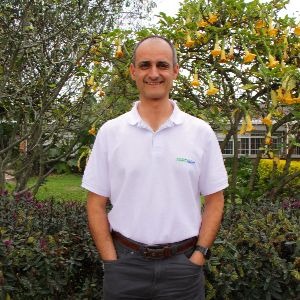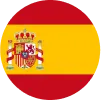Cimpa Site
At its Cimpa Site in Santander, AGROSAVIA is developing advanced crop management practices for sugar cane, through the introduction and selection of promising genetic materials for panela-producing regions. Since 2008, agroindustrial information has been collected which has identified new sugar cane varieties with high potential for producing panela in the Hoya del Río Suárez subregion, in the departments of Boyacá and Santander, in the Vélez province and in most of AGROSAVIA’s research centers sites.
This process began 10 years ago with 15 varieties delivered by the agreement between the Corporation and the Colombian sugarcane research center (Centro de Investigación de la Caña de Azúcar, CENICAÑA); currently, 78 varieties have been identified, and, despite the fact that there are fewer commercial milling trials, they are expected to equal or exceed the yields of RD 75-11—material released by AGROSAVIA 20 years ago to panela producers in Boyacá, Santander, the Vélez province and to other AGROSAVIA research centers. The new variety CC 93-7711 was recently released.
Other areas of interest are fruit trees; pest management; agroindustrial chains with producers of panela and guava farms; technical supply, research and transfer; and agronomic crop management at various economic levels (small farmers, semi-industrial and industrial), which have doubled yields of both sugarcane and panela.
These results have been achieved thanks to planting adjustments, seed selection, fertilizer production and quality, identification of optimum weed and pest control periods, determination of time to maturity, identification of varieties adapted to specific production niches and to their destined use (panela, non-refined liquid sugar, or forage), including it being used as fiber to provide the caloric self-sufficiency of the burners.
The design of the sugar cane mill complies with technical and hygienic requirements for food production and handling: plant distribution without cross flows, separation of areas and isolation of the molding room, uneven levels for handling juice and molasses by gravity, use of stainless steel, design of pre-cleaners, pans and tables, and use of subproducts in the elaboration of panela for animal feed and the generation of enriched organic fertilizers.
Gallery
Director

-
Juan Diego Palacio Mejía
- (+57) 60 1 9144677, Ext. 1201
- jpalacio@agrosavia.co
- View profile
Agricultural Engineer from the National University of Colombia, Medellín campus, M.Sc. in Agricultural Sciences with emphasis on Neotropical Plant Genetic Resources from the National University of Colombia, Palmira campus, and Ph.D. in Plant Biology from the University of Texas at Austin, USA. He worked as senior researcher at the Alexander von Humboldt Biological Resources Research Institute, where he founded and directed for 10 years the Tissue Collection. He was also director of ICA’s Laboratory of Genetically Modified Organisms (LOGM, from its name in Spanish), based in the Tibaitatá Research Center. He is currently a professor at the National University of Colombia, Palmira campus, and at the University of Córdoba, Colombia, where he teaches courses in molecular biology techniques, biodiversity, and evolution. Juan Diego has participated in the publication of more than 30 scientific articles.




